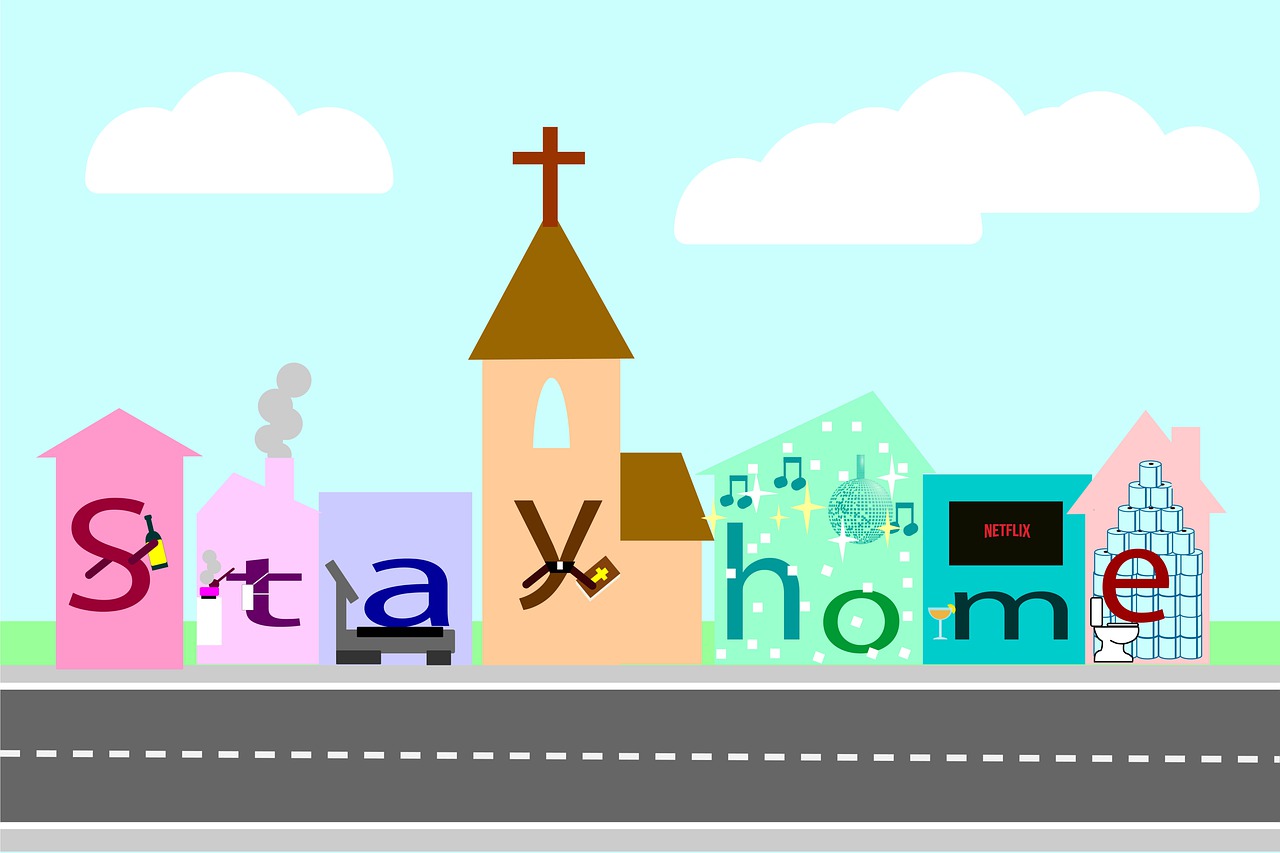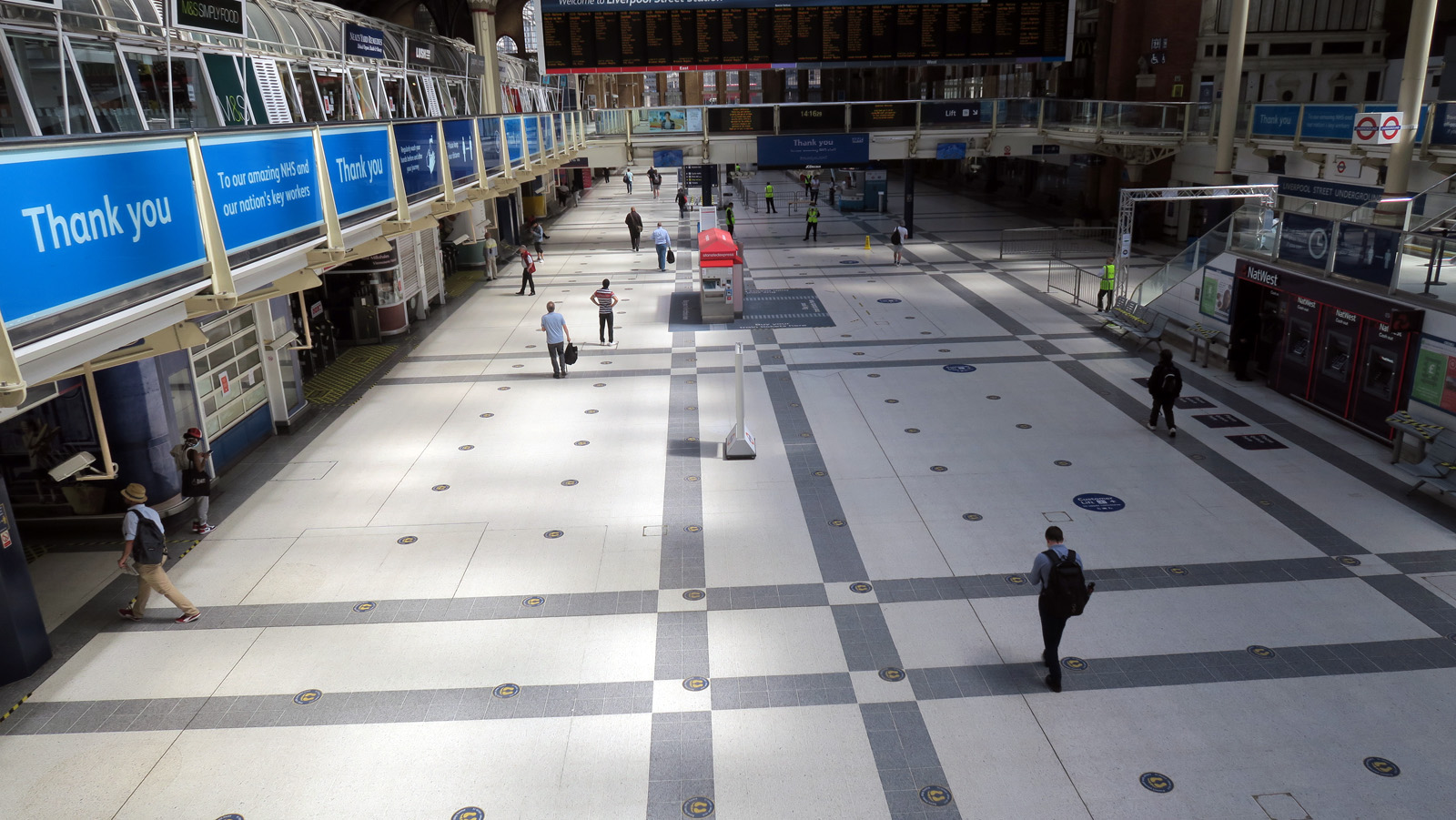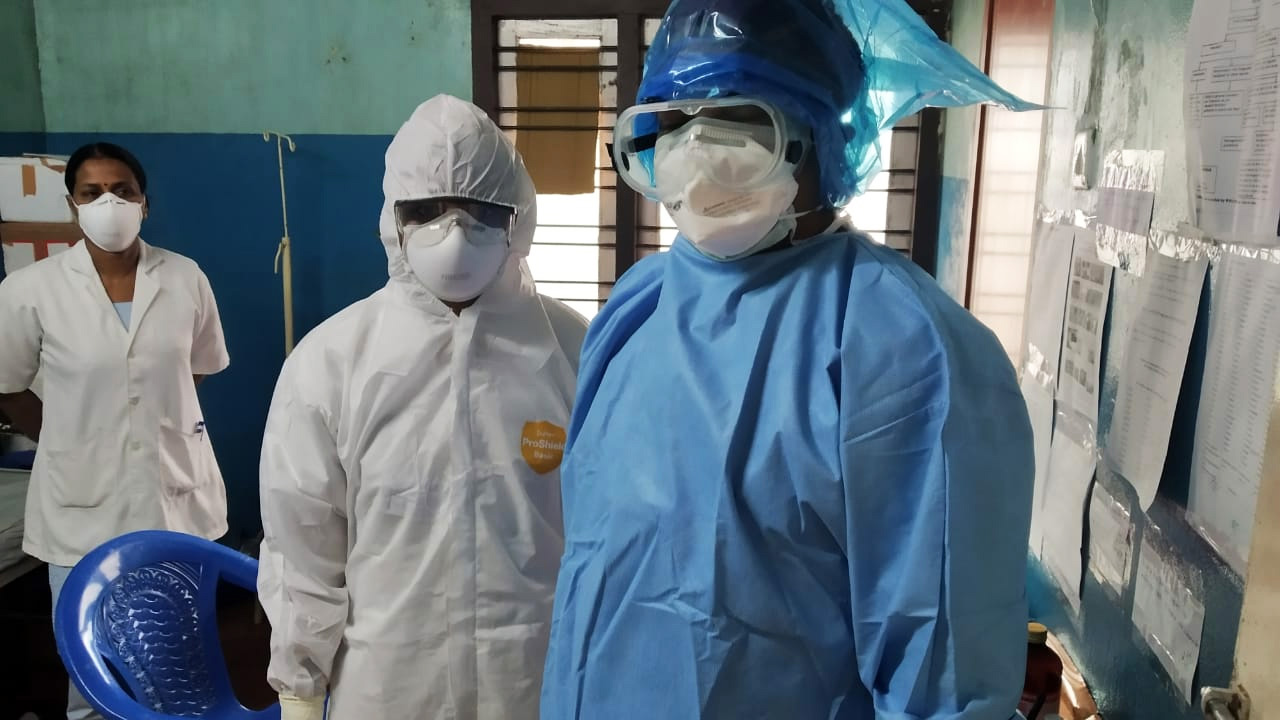 Mid-December saw a rapid rise in coronavirus cases in London and the South East and parts of eastern and central southern England. This was due to a new strain of Covid, which is more infectious. In response, the UK government introduced a new tier 4 level of restrictions for these areas from 20 December. These amount to a complete lockdown. The devolved administrations also announced lockdowns. In addition, the Christmas relaxation of rules was tightened across the UK. Households (up to three) were only allowed to get together on Christmas day and not the days either side (or one day between 23 and 27 December in the case of Northern Ireland). Tier 4 residents were not allowed to visit other households even on Christmas day.
Mid-December saw a rapid rise in coronavirus cases in London and the South East and parts of eastern and central southern England. This was due to a new strain of Covid, which is more infectious. In response, the UK government introduced a new tier 4 level of restrictions for these areas from 20 December. These amount to a complete lockdown. The devolved administrations also announced lockdowns. In addition, the Christmas relaxation of rules was tightened across the UK. Households (up to three) were only allowed to get together on Christmas day and not the days either side (or one day between 23 and 27 December in the case of Northern Ireland). Tier 4 residents were not allowed to visit other households even on Christmas day.
The lockdowns aimed to slow the spread of the virus and reduce deaths. But this comes at a considerable short-term economic cost, especially to the retail and leisure sectors, which are required to close while the lockdowns remain in force. In taking the decision to introduce these tougher measures, the four administrations had to weigh up the benefits of reduced deaths and illness and pressure on the NHS against the short-term economic damage. As far a long-term economic damage is concerned, this might be even greater if lockdowns were not imposed and the virus spread more rapidly.
In a blog back in September, we examined the use of cost–benefit analysis (CBA) to aid decision-making about such decisions. The following is an updated version of that blog.
The use of cost–benefit analysis
 It is commonplace to use cost–benefit analysis (CBA) in assessing public policies, such as whether to build a new hospital, road or rail line. Various attempts in the past few months have been made to use CBA in assessing policies to reduce the spread of the coronavirus. These have involved weighing up the costs and benefits of national or local lockdowns or other containment measures. But, as with other areas where CBA is used, there are serious problems of measuring costs and benefits and assessing risks. This is particularly problematic where human life is involved and where a value has to be attached to a life saved or lost.
It is commonplace to use cost–benefit analysis (CBA) in assessing public policies, such as whether to build a new hospital, road or rail line. Various attempts in the past few months have been made to use CBA in assessing policies to reduce the spread of the coronavirus. These have involved weighing up the costs and benefits of national or local lockdowns or other containment measures. But, as with other areas where CBA is used, there are serious problems of measuring costs and benefits and assessing risks. This is particularly problematic where human life is involved and where a value has to be attached to a life saved or lost.
The first step in a CBA is to identify the benefits and costs of the policy.
Identifying the benefits and costs of the lockdown
The benefits of the lockdown include lives saved and a reduction in suffering, not only for those who otherwise would have caught the virus but also for their family and friends. It also includes lives saved from other diseases whose treatment would have been put (even more) on hold if the pandemic had been allowed to rage and more people were hospitalised with the virus. In material terms, there is the benefit of saving in healthcare and medicines and the saving of labour resources. Then there are the environmental gains from less traffic and polluting activities.
 On the cost side, there is the decline in output from businesses being shut and people being furloughed or not being able to find work. There is also a cost if schools have to close and children’s education is thereby compromised. Then there is the personal cost to people of being confined to home, a cost that could be great for those in cramped living conditions or in abusive relationships. Over the longer term, there is a cost from people becoming deskilled and firms not investing – so-called scarring effects. Here there are the direct effects and the multiplier effects on the rest of the economy.
On the cost side, there is the decline in output from businesses being shut and people being furloughed or not being able to find work. There is also a cost if schools have to close and children’s education is thereby compromised. Then there is the personal cost to people of being confined to home, a cost that could be great for those in cramped living conditions or in abusive relationships. Over the longer term, there is a cost from people becoming deskilled and firms not investing – so-called scarring effects. Here there are the direct effects and the multiplier effects on the rest of the economy.
Estimating uncertain outcomes
 It is difficult enough identifying all the costs and benefits, but many occur in the future and here there is the problem of estimating the probability of their occurrence and their likely magnitude. Just how many lives will be saved from the policy and just how much will the economy be affected? Epidemiological and economic models can help, but there is a huge degree of uncertainty over predictions made about the spread of the disease, especially with a new strain of the virus, and the economic effects, especially over the longer term.
It is difficult enough identifying all the costs and benefits, but many occur in the future and here there is the problem of estimating the probability of their occurrence and their likely magnitude. Just how many lives will be saved from the policy and just how much will the economy be affected? Epidemiological and economic models can help, but there is a huge degree of uncertainty over predictions made about the spread of the disease, especially with a new strain of the virus, and the economic effects, especially over the longer term.
One estimate of the number of lives saved was made by Miles et al. in the NIESR paper linked below. A figure of 440 000 was calculated by subtracting the 60 000 actual excess deaths over the period of the first lockdown (March to June 2020) from a figure of 500 000 lives lost which, according to predictions, would have been the consequence of no lockdown. However, the authors acknowledge that this is likely to be a considerable overestimate because:
It does not account for changes in behaviour that would have occurred without the government lockdown; it does not count future higher deaths from side effects of the lockdown (extra cancer deaths for example); and it does not allow for the fact that some of those ‘saved’ deaths may just have been postponed because when restrictions are eased, and in the absence of a vaccine or of widespread immunity, deaths may pick up again.
Some help in estimating likely outcomes from locking down or not locking down the economy can be gained by comparing countries which have taken different approaches. The final article in the first list below compares the approaches in the UK and Sweden. Sweden had much lighter control measures than the UK and did not impose a lockdown. Using comparisons of the two approaches, the authors estimate that some 20 000 lives were saved by the lockdown – considerably less than the 440 000 estimate.
Estimating the value of a human life
To assess whether the saving of 20 000 lives was ‘worth it’, a value would have to be put on a life saved. Although putting a monetary value on a human life may be repugnant to many people, such calculations are made whenever a project is assessed which either saves or costs lives. As we say in the 10th edition of Economics (page 381):
Some people argue ‘You can’t put a price on a human life: life is priceless.’ But just what are they saying here? Are they saying that life has an infinite value? If so, the project must be carried out whatever the costs, and even if other benefits are zero! Clearly, when evaluating lives saved from the project, a value less than infinity must be given.
Other people might argue that human life cannot be treated like other costs and benefits and put into mathematical calculations. But what are these people saying? That the question of lives saved should be excluded from the cost–benefit study? If so, the implication is that life has a zero value! Again this is clearly not the case.
In practice, there are two approaches used to measure the value of a human life.
 The first uses the value of a statistical life (VSL). This is based on the amount extra the average person would need to be paid to work in a job where there is a known probability of losing their life. So if people on average needed to be paid an extra £10 000 to work in a job with a 1% chance of losing their life, they would be valuing a life at £1 000 000 (£10 000/0.01). To avoid the obvious problem of young people’s lives being valued the same as old people’s ones, even though a 20 year-old on average will live much longer than a 70 year-old, a more common measure is the value of a statistical life year (VSLY).
The first uses the value of a statistical life (VSL). This is based on the amount extra the average person would need to be paid to work in a job where there is a known probability of losing their life. So if people on average needed to be paid an extra £10 000 to work in a job with a 1% chance of losing their life, they would be valuing a life at £1 000 000 (£10 000/0.01). To avoid the obvious problem of young people’s lives being valued the same as old people’s ones, even though a 20 year-old on average will live much longer than a 70 year-old, a more common measure is the value of a statistical life year (VSLY).
A problem with VSL or VSLY measures is that they only take into account the quantity of years of life lost or saved, not the quality.
A second measure rectifies this problem. This is the ‘quality of life adjusted year (QALY)’. This involves giving a value to a year of full health and then reducing it according to how much people’s quality of life is reduced by illness, injury or poverty. The problem with this measure is the moral one that a sick or disabled person’s life is being valued less than the life of a healthy person. But it is usual to make such adjustments when considering medical intervention with limited resources.
One adjustment often made to QALYs or VSLYs is to discount years, so that one year gained would be given the full value and each subsequent year would be discounted by a certain percentage from the previous year – say, 3%. This would give a lower weighting to years in the distant future than years in the near future and hence would reduce the gap in predicted gains from a policy between young and old people.
Cost–effectiveness analysis (CEA)
Even using QALYs, there is still the problem of measuring life and health/sickness. A simpler approach is to use cost–effectiveness analysis (CEA). This takes a social goal, such as reducing the virus production rate (R) below 1 (e.g. to 0.9), and then finding the least-cost way of achieving this. As Mark Carney says in his third Reith Lecture:
As advocated by the economists Nick Stern and Tim Besley, the ideal is to define our core purpose first and then determine the most cost-effective interventions to achieve this goal. Such cost–effectiveness analysis explicitly seeks to achieve society’s values.
Cost–effectiveness analysis can take account of various externalities – as many of the costs will be – by giving them a value. For example, the costs of a lockdown to people in the hospitality sector or to the education of the young could be estimated and included in the costs. The analysis can also take into account issues of fairness by identifying the effects on inequality when certain groups suffer particularly badly from Covid or lockdown policies – groups such as the poor, the elderly and children. Achieving the goal of a specific R for the least cost, including external costs and attaching higher weights on the effects on certain groups then becomes the goal. As Carney says:
R brings public health and economics together. Relaxations of restrictions increase R, with economic, health and social consequences. A strategic approach to Covid is the best combination of policies to achieve the desired level of infection control at minimum economic cost with due respect for inequality, mental health and other social consequences, and calculating those costs then provides guidance when considering different containment strategies. That means paying attention to the impact on measures of fairness, the social returns to education, intergenerational equity and economic dynamism.
Conclusion
Given the uncertainties surrounding the measurement of the number of lives saved and the difficulties of assigning a value to them, and given the difficulties of estimating the economic and social effects of lockdowns, it is not surprising that the conclusions of a cost–benefit analysis, or even a cost–effectiveness analysis of a lockdown will be contentious. But, at least such analysis can help to inform discussion and drive future policy decisions. And a cost–effectiveness analysis can be a practical way of helping politicians reach difficult decisions about life and death and the economy.
Articles (original blog)
- When Does the Cure Become Worse Than the Disease? Applying Cost-Benefit Analysis to the Covid-19 Recovery
- How much did the Covid-19 lockdown really cost the UK?
- The UK lockdown: Balancing costs against benefits
- How Economists Calculate The Costs And Benefits Of COVID-19 Lockdowns
- Coronavirus Is Giving Cost-Benefit Analysts Fits
- “Stay at Home, Protect the National Health Service, Save Lives”: a cost benefit analysis of the lockdown in the United Kingdom
- COVID-19 is Forcing Economists to Rethink the Value of Life
- A cost–benefit analysis of the COVID-19 disease
- Living with Covid-19: Balancing Costs against Benefits in the Face of the Virus
- How Many Lives Has Lockdown Saved in the UK?
Journal of Medical Ethics, blog, Derek Soled, Michelle Bayefsky and Rahul Nayak (19/5/20)
The Guardian, Larry Elliott (6/9/20)
VoxEU, David Miles (13/7/20)
Forbes, Chris Conover (27/3/20)
Bloomberg, Cass R. Sunstein (12/5/20)
Wiley Online Library, David Miles, Mike Stedman and Adrian Heald (13/8/20)
RealClearPolicy, James Broughel (20/8/20)
Oxford Review of Economic Policy, Robert Rowthorn and Jan Maciejowski (28/8/20)
National Institute Economic Review, vol. 253, David Miles, Mike Stedman and Adrian Heald (28/7/20)
medRxiv, Rickard Nyman and Paul Ormerod (21/8/20)
Articles (additional)
- The ethics of the pandemic: life or quality of life?
- Was lockdown worth the cost?
- Casey December 18th, 2020 Covid-19: Is there a trade-off between economic damage and loss of life?
- Far from Well: The UK since COVID‐19, and Learning to Follow the Science(s)
- DHSC/ONS/GAD/HO: Direct and indirect impacts of COVID-19 on excess deaths and morbidity
 Lecture 3: From Covid Crisis to Renaissance (Transcript)
Lecture 3: From Covid Crisis to Renaissance (Transcript)
Prospect, Angie Hobbs (15/10/20)
MoneyWeek, Merryn Somerset Webb (26/11/20)
LSE blog, Bernard H Casey (18/12/20)
Fiscal Studies: Wiley Online Library, Gus O’Donnell and Harry Begg (18/12/20)
SAGE (18/9/20)
BBC Reith Lectures, Mark Carney (16/12/20)
Questions
- What are the arguments for and against putting a monetary value on a life saved?
- Are QALYs the best way of measuring lives saved from a policy such as a lockdown?
- Compare the relative merits of cost–benefit analysis and cost–effectiveness analysis.
- If the outcomes of a lockdown are highly uncertain, does this strengthen or weaken the case for a lockdown? Explain.
- What specific problems are there in estimating the number of lives saved by a lockdown?
- How might the age distribution of people dying from Covid-19 affect the calculation of the cost of these deaths (or the benefits or avoiding them)?
- How might you estimate the costs to people who suffer long-term health effects from having had Covid-19?
- What are the arguments for and against using discounting in estimating future QALYs?
- The Department of Transport currently uses a figure of £1 958 303 (in 2018 prices) for the value of a life saved from a road safety project. Find out how this is figure derived and comment on it. See Box 12.5 in Economics 10th edition and Accident and casualty costs, Tables RAS60001 and RA60003, (Department of Transport, 2019).